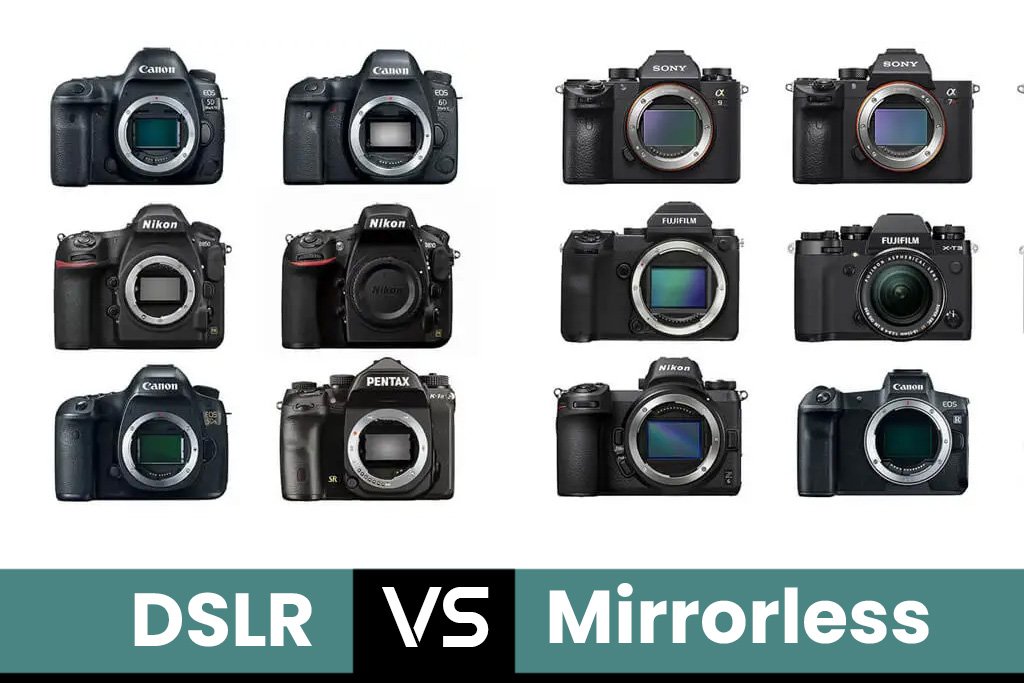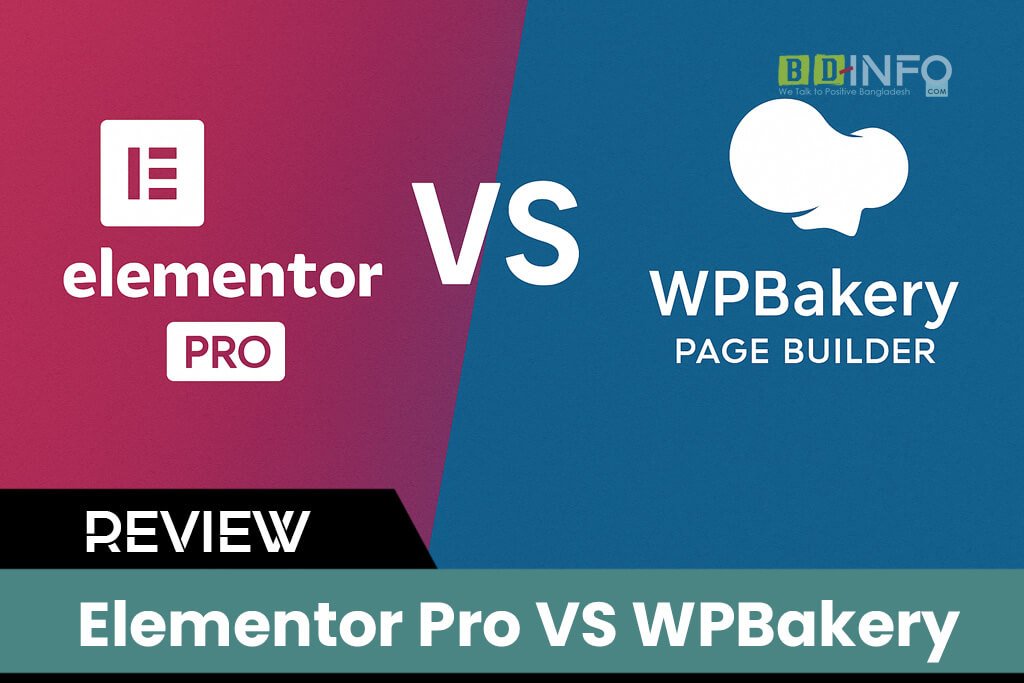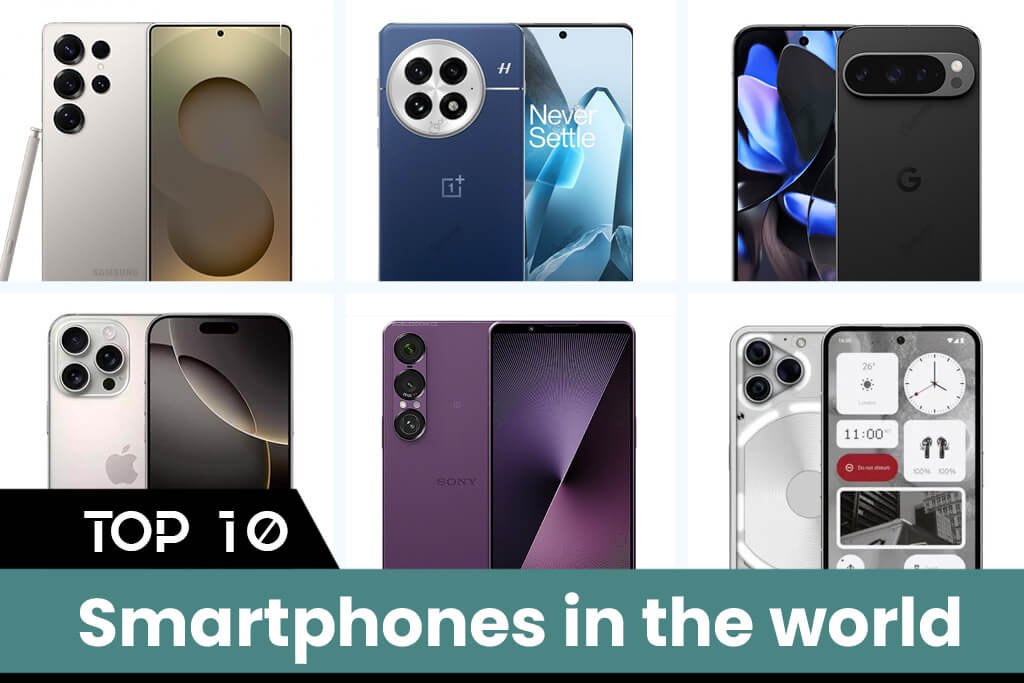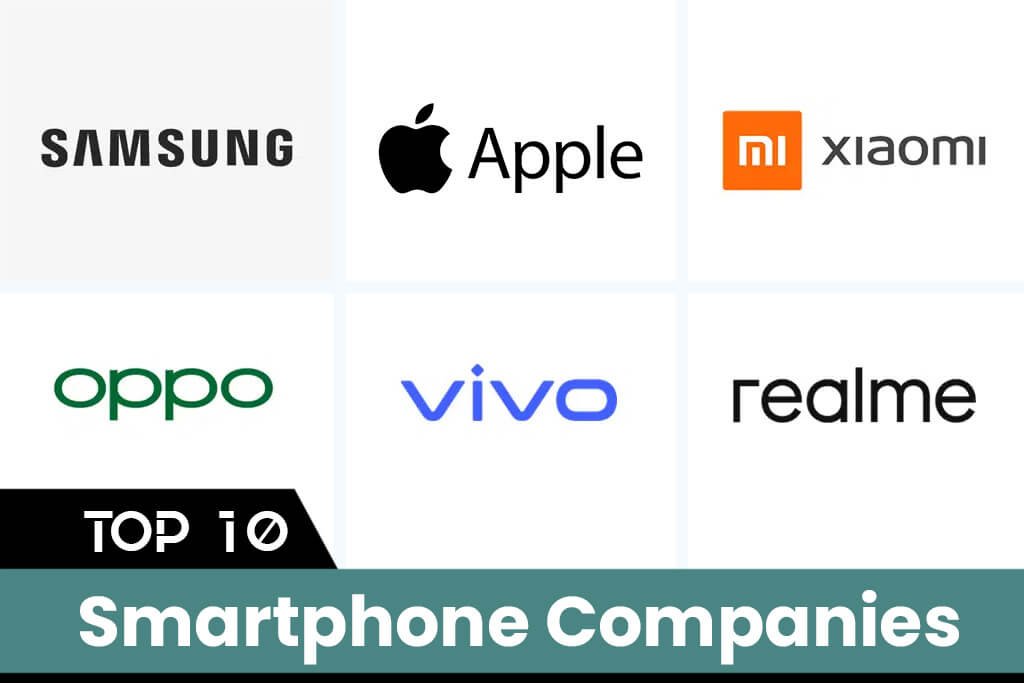DSLR VS Mirrorless Camera: Which is the best? Many people are hesitant to choose a digital camera. We are organizing this time to meet your conflict. Let’s take a look. What is the difference between a mirrorless camera and a DSLR?
Choosing the right camera can be overwhelming, especially with the vast options available today. Two major contenders dominate the photography world: mirrorless cameras and DSLR cameras. Each type has its own strengths and weaknesses, catering to different needs and preferences. This guide will help you understand the key differences and determine which one suits your requirements best.
DSLR VS Mirrorless Camera
Here is your main deference of DSLR Camera VS Mirrorless Camera. You can choose this what you need. Ultimately, both DSLR and mirrorless cameras have their advantages and disadvantages, and the choice between the two will depend on your personal preferences, shooting style, and budget.
What Are DSLR Cameras?
DSLR stands for Digital Single-Lens Reflex. These cameras use a mirror mechanism to reflect light from the lens into an optical viewfinder. When you press the shutter button, the mirror flips up, allowing light to hit the image sensor and capture the photo.

Key Features of DSLR Cameras:
- Optical Viewfinder (OVF): Offers a clear, real-time view of the scene through the lens.
- Interchangeable Lenses: A wide variety of lenses available for different photography styles.
- Long Battery Life: Typically longer battery life due to lower reliance on electronic displays.
- Robust Build: Often larger and more durable, suitable for rugged conditions.
What Are Mirrorless Cameras?
Mirrorless cameras, as the name suggests, do not use a mirror mechanism. Instead, light directly hits the image sensor, and the image is displayed on an electronic viewfinder (EVF) or LCD screen.

Key Features of Mirrorless Cameras:
- Compact Design: Smaller and lighter due to the absence of a mirror and optical viewfinder.
- Electronic Viewfinder (EVF): Displays a digital preview of your image, including exposure and color settings.
- Advanced Autofocus: Often features faster and more accurate autofocus systems.
- Silent Operation: Ideal for quiet environments due to the lack of a mirror mechanism.
Mirrorless vs DSLR Cameras: Head-to-Head Comparison
When choosing a camera, one of the biggest decisions photographers face is between mirrorless cameras and DSLRs (Digital Single-Lens Reflex) cameras. Both types have their strengths, catering to different needs and preferences. Mirrorless cameras, on the other hand, eliminate the mirror mechanism, using electronic viewfinders or LCD screens instead. This results in smaller, lighter bodies, faster shooting speeds, and advancements in autofocus and video capabilities. With rapid technological improvements, mirrorless cameras are becoming increasingly popular, even among professionals.
| Mirrorless | DSLR | |
|---|---|---|
| Size and Portability | Typically smaller and lighter, making them easier to carry for travel and street photography. | Larger and bulkier, which can be cumbersome but provides a better grip for some users. |
| Image Quality | Many models now offer full-frame sensors and high-resolution capabilities. | Historically known for superior image quality, though modern mirrorless cameras have caught up. |
| Autofocus and Speed | Often outperforms DSLRs in autofocus speed and accuracy, especially in video mode, due to advanced phase-detection systems. | Reliable autofocus in still photography, particularly in low-light conditions, but slower in live view and video modes. |
| Battery Life | Shorter battery life due to electronic viewfinders and LCD screens, though modern models are improving in this area. | Superior battery life due to the optical viewfinder and lower reliance on electronic components. |
| Lens and Accessory Availability | Growing lens ecosystems, with many manufacturers releasing adapters to use DSLR lenses on mirrorless bodies. | A vast range of lenses and accessories built over decades. |
| Video Performance | Superior for video, with features like 4K/8K recording, advanced autofocus, and silent operation. | Capable of good video but lacks the advanced video-centric features found in mirrorless cameras. |
| Price | Can be more expensive, particularly for the latest high-end models. | Generally more affordable, especially for entry-level models. |
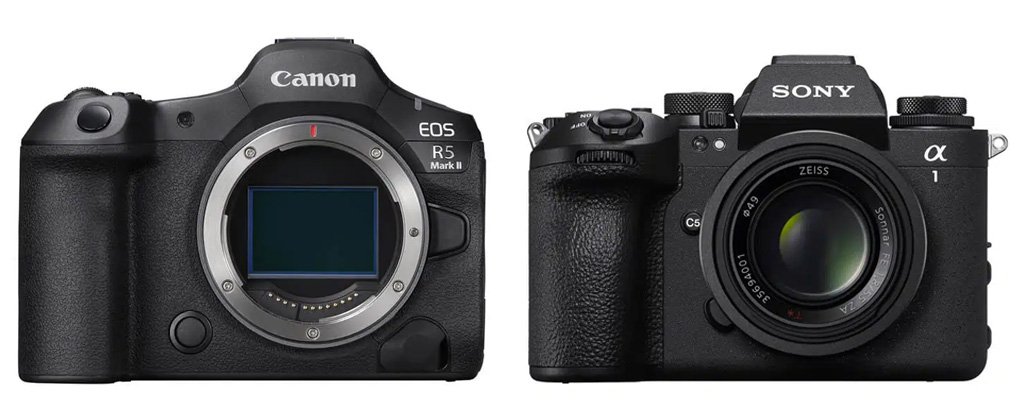
Advantages Of DSLR VS Mirrorless Cameras
When choosing between a DSLR (Digital Single-Lens Reflex) camera and a mirrorless camera, understanding the advantages of each is crucial. While mirrorless cameras are gaining popularity due to their compact size and advanced technology, DSLRs still offer several key benefits that make them a preferred choice for many photographers.
| DSLRs | Mirrorless Cameras |
|---|---|
| Long Battery Life Ideal for long shoots without frequent recharging. | Compact and Lightweight Perfect for travel and on-the-go shooting. |
| Optical Viewfinder Offers a natural and lag-free view of the scene. | Advanced Autofocus Especially beneficial for video and action photography. |
| Durable and Reliable Built to withstand tough conditions. | Silent Shooting Great for events and wildlife photography. |
| Wide Lens Selection Extensive range of lenses for every photography genre. | Future-Proof Technology Continual advancements in sensor and processing power. |
Who should choose which camera?
| DSLR | Mirrorless Camera |
|---|---|
| Budget-Conscious Buyers Entry-level DSLRs are more affordable. | Travel and Street Photographers The compact size and lightweight design make them easy to carry. |
| Photography Enthusiasts Those who prefer traditional optical viewfinders. | Videographers Advanced video features and autofocus capabilities. |
| Event and Studio Photographers Ideal for long sessions without frequent battery changes. | Tech Enthusiasts Those who want the latest features and innovations. |
| Existing DSLR Users Easier transition and compatibility with existing lenses and accessories. | Wildlife and Sports Photographers Silent shooting and fast autofocus are major advantages. |
DSLR VS Mirrorless Cameras : Popular Models
| DSLR | Mirrorless |
|---|---|
| Canon EOS 90D Known for excellent image quality and robust performance. | Sony Alpha A7 IV A versatile full-frame option for both photography and video. |
| Nikon D7500 Great for enthusiasts with reliable autofocus and 4K video. | Fujifilm X-T5 Known for its retro design and exceptional image quality. |
| Pentax K-1 Mark II Offers weather-sealing and superb image quality for outdoor photography. | Canon EOS R8 An affordable full-frame mirrorless camera with advanced features. |
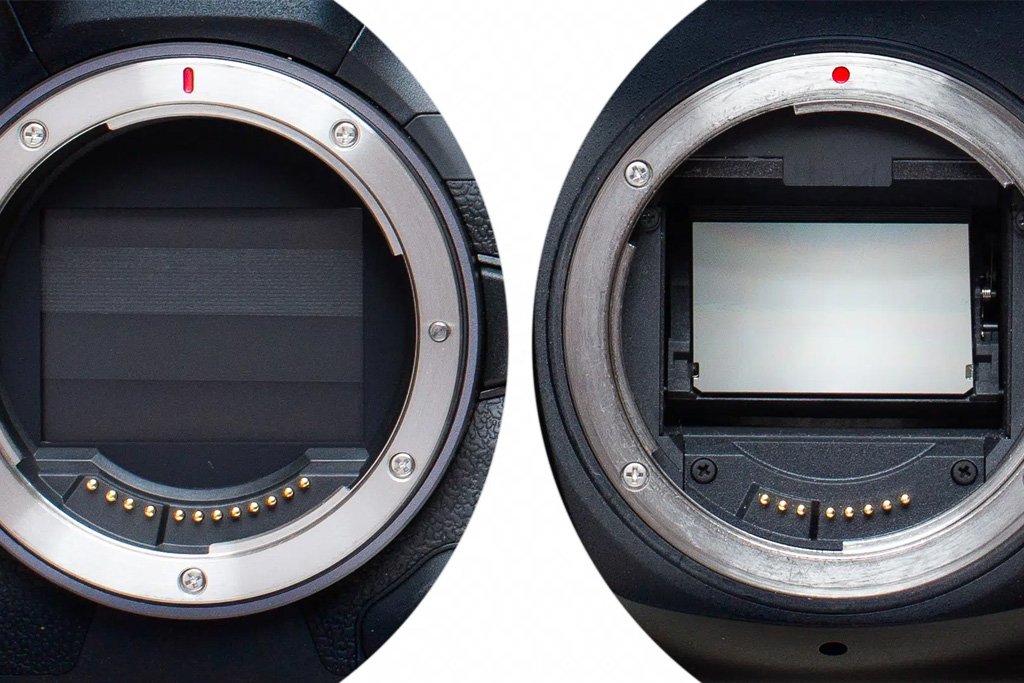
DSLR VS Mirrorless Camera Differences
The main difference between DSLR (Digital Single-Lens Reflex) and mirrorless cameras is in how they function and how they handle light.
DSLR cameras use a mirror and a prism to reflect the image that passes through the lens into the viewfinder. When you press the shutter button, the mirror flips up and the image is captured by the camera’s sensor. DSLR cameras are typically larger and heavier than mirrorless cameras, and they tend to have longer battery life.
Mirrorless cameras, on the other hand, do not have a mirror or prism. Instead, they use a digital viewfinder or the camera’s LCD screen to display the image. Mirrorless cameras are typically smaller and lighter than DSLR cameras, making them more portable and easier to carry around.
One advantage of mirrorless cameras is that they are often faster and more accurate at focusing, as they use contrast detection autofocus instead of phase detection autofocus used in DSLRs. They also have fewer moving parts, making them more durable and less prone to mechanical failure.
However, DSLR cameras still have some advantages over mirrorless cameras, including better battery life, a wider range of lens options, and generally better performance in low light conditions. DSLRs are also often preferred by professional photographers who require the highest quality images and the most advanced features.
Ultimately, the choice between a DSLR and a mirrorless camera comes down to personal preference and the specific needs of the photographer. Both types of cameras have their advantages and disadvantages, and the best camera for you will depend on your shooting style, budget, and the types of images you want to capture.
Size and Weight
One of the biggest differences between DSLR and mirrorless cameras is their size and weight. DSLRs are typically larger and heavier, due to the need for a mirror box and prism inside the camera body. Mirrorless cameras, on the other hand, are more compact and lightweight, making them easier to carry around.
Auto focus speed
The role of mirrorless cameras and DSLR cameras in detecting the speed of the autofocus is almost the same. The advantage of DSLR here is that it can detect the phase quickly. A type of sensor is used to detect mirrorless camera contrast. Which can detect phases in low light.
While both DSLRs and mirrorless cameras have autofocus capabilities, the way they focus is different. DSLRs use phase detection autofocus, which is generally faster and more accurate when tracking moving subjects. Mirrorless cameras use contrast detection autofocus, which is slower but more accurate in low light situations.
Electronic Viewfinder vs. Optical Viewfinder
DSLRs use an optical viewfinder that shows you the image through a prism and mirror, while mirrorless cameras use an electronic viewfinder (EVF) that displays a digital image on a small screen.
Some photographers prefer the optical viewfinder because it shows a real-time image with no lag, while others prefer the EVF because it allows you to see exactly what the final image will look like before you take the shot.
Battery Life
DSLRs generally have longer battery life than mirrorless cameras, mainly due to the lack of a power-hungry electronic viewfinder. However, this gap is narrowing as mirrorless technology improves and new batteries are developed.
Lens Options
DSLRs have been around longer than mirrorless cameras, so there are generally more lens options available for DSLRs. However, mirrorless cameras are catching up and many manufacturers now offer a wide range of lenses for their mirrorless systems.
Preview image
For image pre-view, DSLR has a type of optical viewfinder sensor that helps capture images with the camera. The mirrorless camera has a lactric viewfinder that acts like an optical viewfinder.
Image stability
Most modern cameras take a small amount of time to capture images. In the case of DSLR, the image stability depends on the shutter speed.
The higher the shutter speed, the higher the image stability. Most mirrorless cameras do not have shutters so image stability is much lower.
Image quality
High resolution images can be taken with DSLR and mirrorless cameras. Current mirrorless cameras use high-quality image sensors that can capture enough light to capture images. DSLRs have APS-CAC sensors that can capture small amounts of light.
Video type
The main difference between a mirrorless camera and a DSLR is the auto focus of the video. In general, mirrorless cameras have more on-chipphase-detection focus sensors. The DSLR cannot detect the mirror upstage during video recording.
Mirrorless cameras are generally better suited for video because they have faster and more accurate autofocus and offer features like focus peaking and zebra patterns to help with exposure. Many mirrorless cameras also offer 4K video recording, which is still rare in DSLRs.
Shooting speed
The shutter speed of a digital camera depends on the shooting speed. Both cameras use very advanced technology shutters so they can capture very quickly.
Although mirrorless cameras do not have a separate lens, good results can be obtained using a mechanical shutter. The best mirrorless camera for shooting. Its resolution is comparatively higher than other cameras.
Ultimately, both DSLR and mirrorless cameras have their advantages and disadvantages, and the choice between the two will depend on your personal preferences, shooting style, and budget.
Conclusion
The choice between a mirrorless and a DSLR camera ultimately depends on your specific needs, preferences, and budget. If you prioritize compactness, cutting-edge technology, and video capabilities, a mirrorless camera is likely the better choice. On the other hand, if you value robust build quality, long battery life, and a wide range of affordable lenses, a DSLR might be more suitable.
Whichever you choose, both types of cameras can deliver stunning results, helping you capture memories and express your creativity. The key is to evaluate your priorities and invest in a system that aligns with your photography goals.
People also searching – DSLR VS Mirrorless Camera : which the best, dslr vs mirrorless cameras, DSLR VS Mirrorless Camera : which the best, dslr vs mirrorless cameras, DSLR VS Mirrorless Camera : which the best, dslr vs mirrorless cameras, DSLR VS Mirrorless Camera : which the best, dslr vs mirrorless cameras, DSLR VS Mirrorless Camera : which the best, dslr vs mirrorless cameras.
DSLR VS Mirrorless Camera : which the best, dslr vs mirrorless cameras, DSLR VS Mirrorless Camera : which the best, dslr vs mirrorless cameras, DSLR VS Mirrorless Camera : which the best, dslr vs mirrorless cameras, DSLR VS Mirrorless Camera : which the best, dslr vs mirrorless cameras

